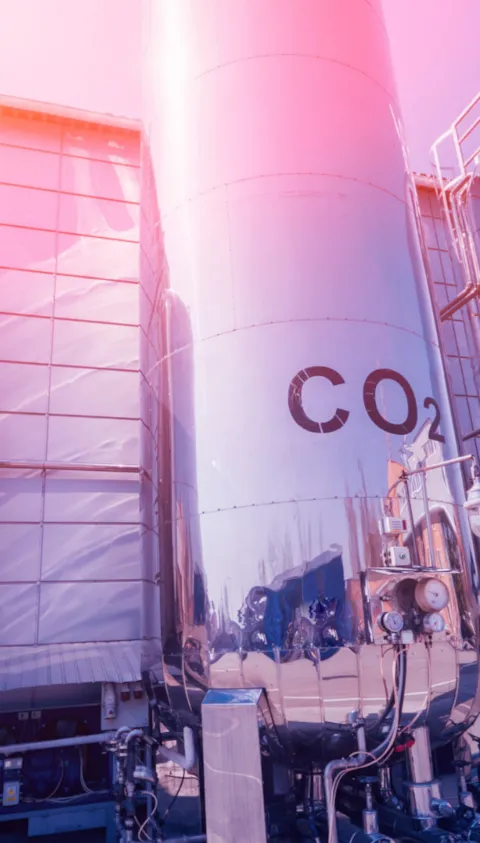Advanced CO2 modelling capabilities in KFX software
A KFX CO2 joint industry project (JIP) has resulted in advanced modelling capabilities in DNV’s computational fluid dynamics software, KFX. The additional capabilities now available support effective and safe CO2 handling, transport and storage.
Safe industrial handling of CO2
There is increased investment in large-scale handling and transport of CO2 in sustainable energy and carbon capture, utilization and storage (CCUS). The safe industrial handling of CO2 is crucial to prevent potential hazards such as asphyxiation or high-pressure incidents, especially as many carbon capture and storage plants will be in densely populated areas.
Fluid states and phase transitions of CO2
To perform consequence and risk assessments and for effective safety planning and design, it is essential to understand the properties and modelling behaviour of CO2. Consequence modelling involving CO2 releases requires the ability of the computational fluid dynamics (CFD) software to handle a range of fluid states and phase transitions that may occur during an accidental release. This affects modelling from discharge through to dispersion.
The objective of the KFX CO2 joint industry project was to further develop KFX for this purpose and bring detailed simulation capabilities to KFX, supporting a new level of safety for CCUS infrastructure. KFX in its latest version has already been used to design CCUS facilities.
Modelling and validation of complex thermodynamics
The focus of the JIP was on the modelling and validation of the complex thermodynamics and heat transfer processes for release of liquid CO2. This includes improving the release source, so that KFX can model multiphase releases that take dry ice particles in the gas flow into account, in addition to solid particles deposited on the ground. This includes sublimation of particles both in the air and deposited on ground that will lower the temperature of the cloud and potentially increase the safety distances. Basis for this modelling is the unique Lagrangian spray model of KFX, which has been extended to handle not only droplets, but also solid particles with complex thermodynamics. To represent the thermodynamics more accurately, there is also the possibility to use real gas equations for the release source instead of the ideal gas approximation.
Although the main focus has been on release from liquid storage, testing has also included dense gas releases, from for instance pipelines.
Another part of the JIP was focused on improving the models for gas dispersion, specifically the treatment of wind boundary conditions and atmospheric turbulence for far-field dispersion, including effects of water vapour condensation, while accounting for geometry (buildings, constructions, etc), terrain/topography (hills, valleys, etc) and vegetation (such as forests). A graphical interface within KFX for editing terrain and building forest models has also been developed for that purpose. These phenomena could significantly impact the dispersion of the cloud and it is important to account for them.
Supporting cost-effective technical design solutions
The JIP concluded in late 2024, and KFX now incorporates the findings with capabilities providing a solid basis for improved CCUS safety and for finding cost-effective technical solutions for design.
The new CO2 models and capabilities in KFX have already been used for several planned CCUS facilities in Europe. By using the new models, the layout and design of the large plants could be significantly modified and even completely changed as a result of the analyses to minimize risk for the public.
Explore our software solution:

KFX™
Advanced dispersion, fire and explosion modelling using computational fluid dynamics (CFD)
